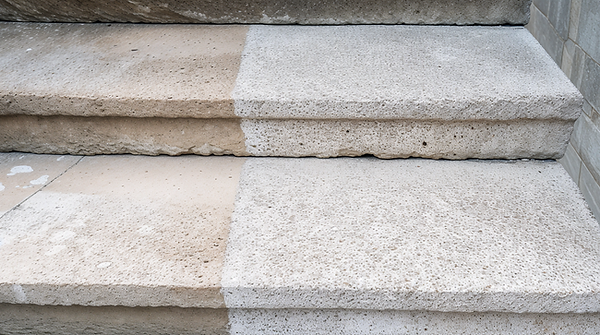
REVITALIZATION THROUGH RENOVATION
Professional restoration of walls, marble, sandstone, granite, and other materials, with an emphasis on preserving authenticity and the underlying structure.
-
Revitalization through renovation is a careful process of restoring and modernizing historical objects, combining traditional craftsmanship with cutting-edge technologies. The goal is not only to preserve the historical and cultural value of these objects but also to enhance their functionality and aesthetic appeal for present and future generations.
-
This process begins with a thorough assessment of the object's condition, including an analysis of materials, structural integrity, and historical significance. Based on this evaluation, a detailed renovation plan is developed that respects original craftsmanship and materials.
-
A key phase is cleaning and conservation, where modern technologies like laser cleaning are employed to gently remove contaminants and corrosive elements without damaging the underlying material. This is followed by repairs and reconstruction, focusing on restoring damaged or missing parts while maintaining an authentic appearance.
-
The final stage involves applying protective coatings and surface treatments that ensure long-term protection against environmental factors while preserving the aesthetic appearance. Through this comprehensive approach, revitalized historical objects are guaranteed to continue fulfilling their cultural and functional roles well into the future.


-
Revitalization through renovation is not only a technical process but also an artistic and scientific endeavor that requires expertise from various fields. Specialists in history, architecture, engineering, and art collaborate to ensure that every aspect of restoration is carried out with the utmost care, respecting the original character of the object. This interdisciplinary cooperation allows for results that not only restore the objects' original beauty but also ensure their long-term sustainability and functionality.Revitalization thus plays a key role in preserving cultural heritage and making it accessible to the wider public, fostering education and cultural awareness.
Advantages of Renovating Historical Objects
Preservation of Cultural Heritage:
Renovating historical objects helps preserve the cultural and historical value of these sites for future generations, allowing them to learn about and appreciate the history and traditions of the past.
Increased
Functionality:
Renovation often involves modernizing infrastructure elements, which enhances the functionality and safety of the objects. This may include installing new heating, lighting, or security systems.
Sustainability:
Renovation is often more environmentally friendly than demolition and new construction, as it minimizes waste and utilizes existing structures. This reduces the ecological footprint and supports sustainable development.
Economic
Benefit:
Restored historical objects can bring economic benefits, such as increasing property value or boosting tourism, which contributes to the local economy.
-
Revitalization through renovation also means restoring the viability of historical objects in the context of their current use. Many historical buildings are adapted for modern purposes, such as office spaces, cultural centers, or residential properties. This approach not only preserves the historical significance of these buildings but also gives them new meaning and purpose in today’s world.
-
In the renovation of historical objects, emphasis is placed on using authentic materials and techniques that match the original construction methods. This includes everything from traditional building practices to specific interior design details. This careful approach ensures that renovated objects maintain their historical character and aesthetic value.

-
One of the key aspects of revitalization is also the preservation and restoration of original artistic elements, such as frescoes, sculptures, and ornaments. These details often carry significant historical and cultural information, and their preservation is crucial for maintaining the historical integrity of the object. Restoration work on these elements requires a high level of expertise and precision.
-
Revitalization of historical objects also has a social and community dimension. Restored buildings can serve as centers for community life, venues for cultural events, and educational programs. In this way, revitalization promotes social cohesion and provides communities with new opportunities for interaction and collaboration, enriching the cultural life of society as a whole.

FOTOGALERIE REALIZACÍ – REVITALIZACE PROSTŘEDNICTVÍM RENOVACE









